According to poet Maximilian Voloshin, nobody felt the antiquity of this land as strongly as Bogaevsky.*
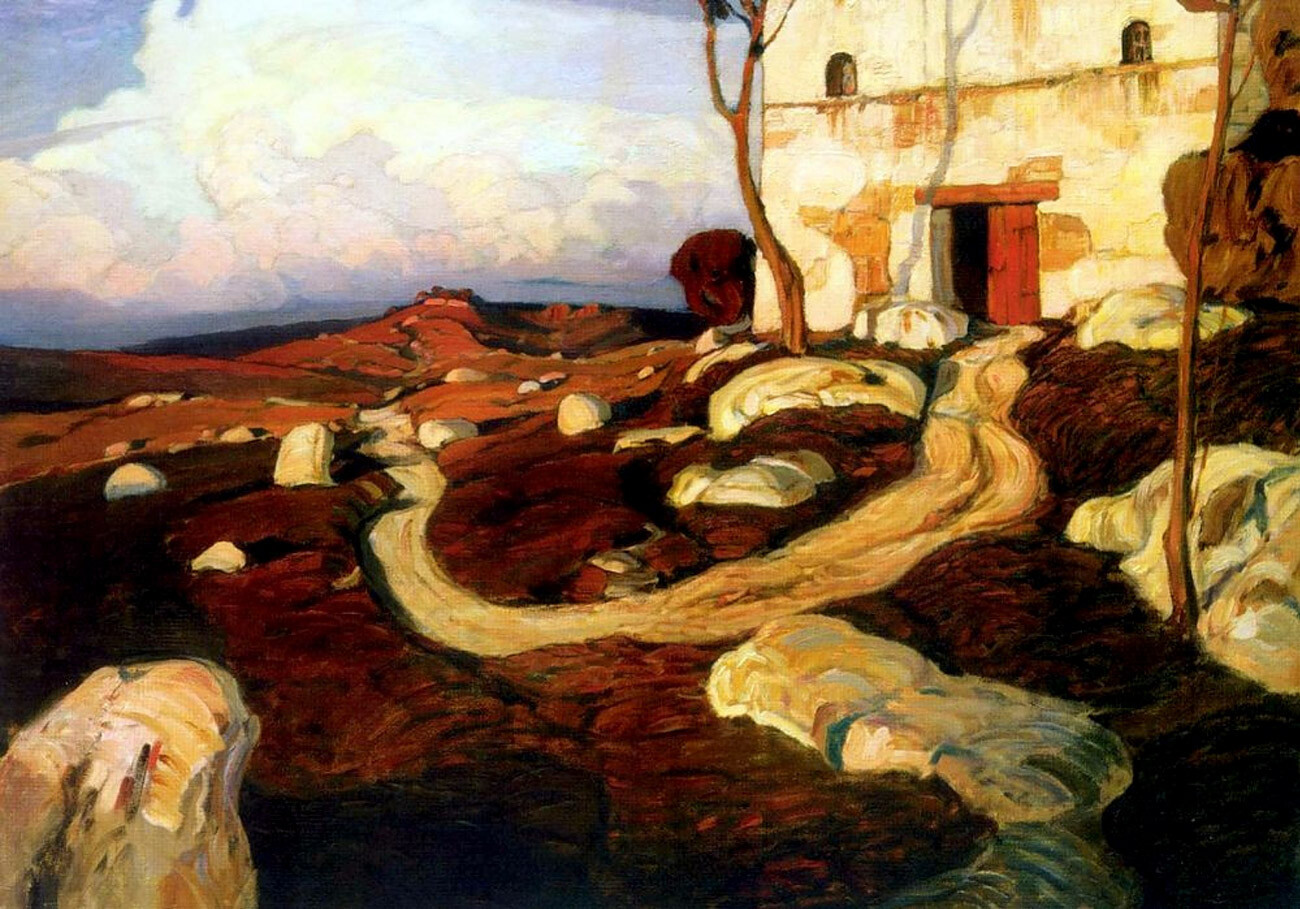
Bogaevsky took his first steps in painting in his native city of Feodosia. There, he studied under great marine painter Ivan Aivazovsky. Arkhip Kuindzhi, whose studio he attended at the St. Petersburg Academy of Arts, also noticed his talent. Together with other students, Bogaevsky went on sketching expeditions along the Volga River and to Crimea and then traveled to Europe, where he made the acquaintance of artists of the Vienna Secession and studied the art of Arnold Böcklin. Even then, he was still drawn to the landscapes of Crimea.
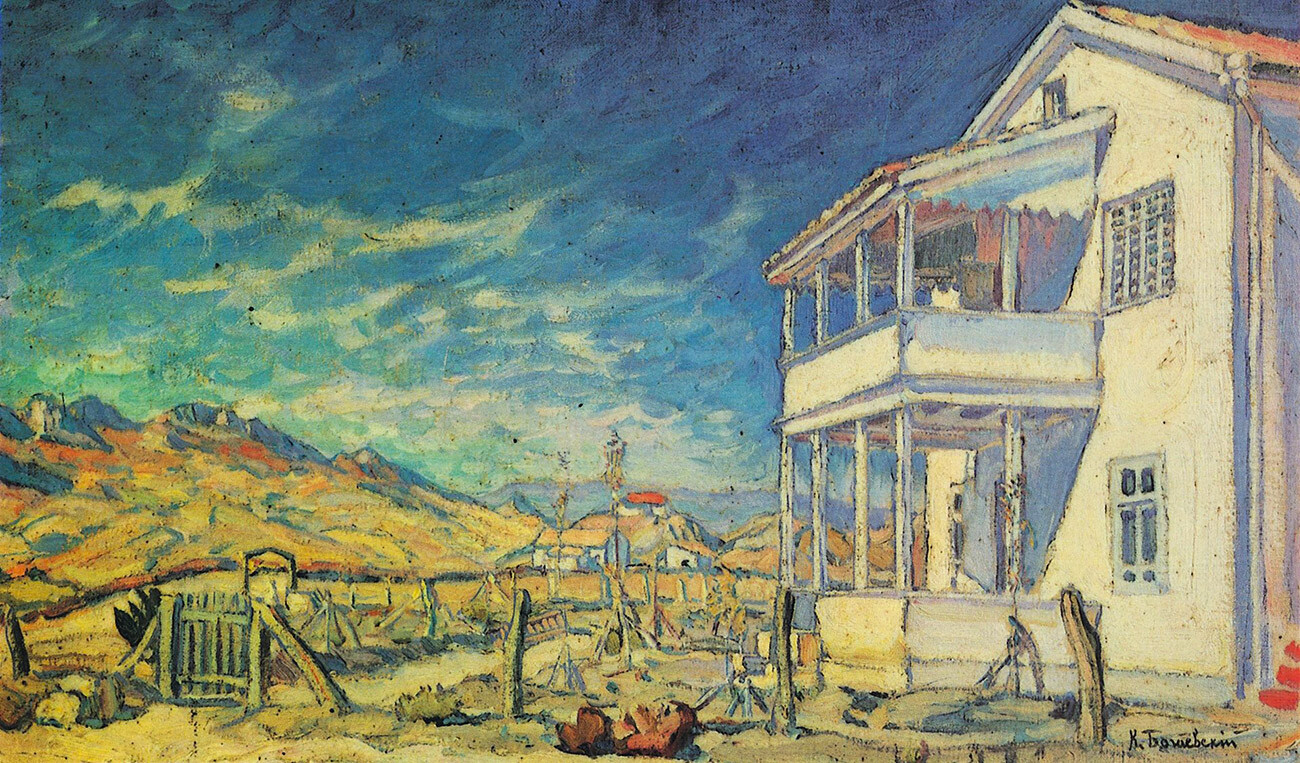
After returning to Feodosia, Bogaevsky traveled extensively around Crimea. In Koktebel, he met poet Maximilian Voloshin. They were united by their love of eastern Crimea - Cimmeria - as this land had been known in antiquity. The poet wrote a lot about the artist and the latter illustrated his books. It was a lifelong friendship.
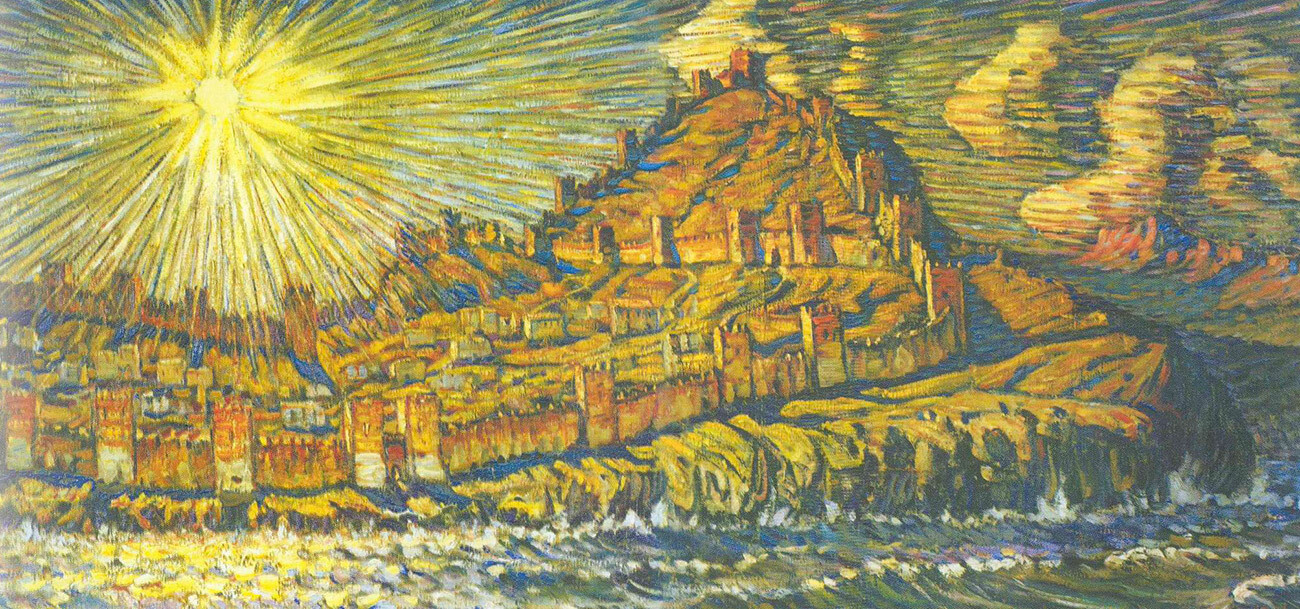
Voloshin called Bogaevsky the “painter of the land” for a reason. Setting up a studio in Feodosia, Bogaevsky created paintings in which he conveyed his peculiar, melancholy vision of the ancient hills and mountains of Crimea. They form part of his “Cimmerian cycle” - memories of a distant, bygone past. A centuries-old history seemed to be concentrated in these bright, complex canvases, where, out of a pile of rough rocks under a blazing sun, the meandering lines of the Genoese fortress suddenly take shape. The artist worked on his paintings to the smallest detail: First he drew on the spot, then painted studies and, only then, created the picture in its final form.
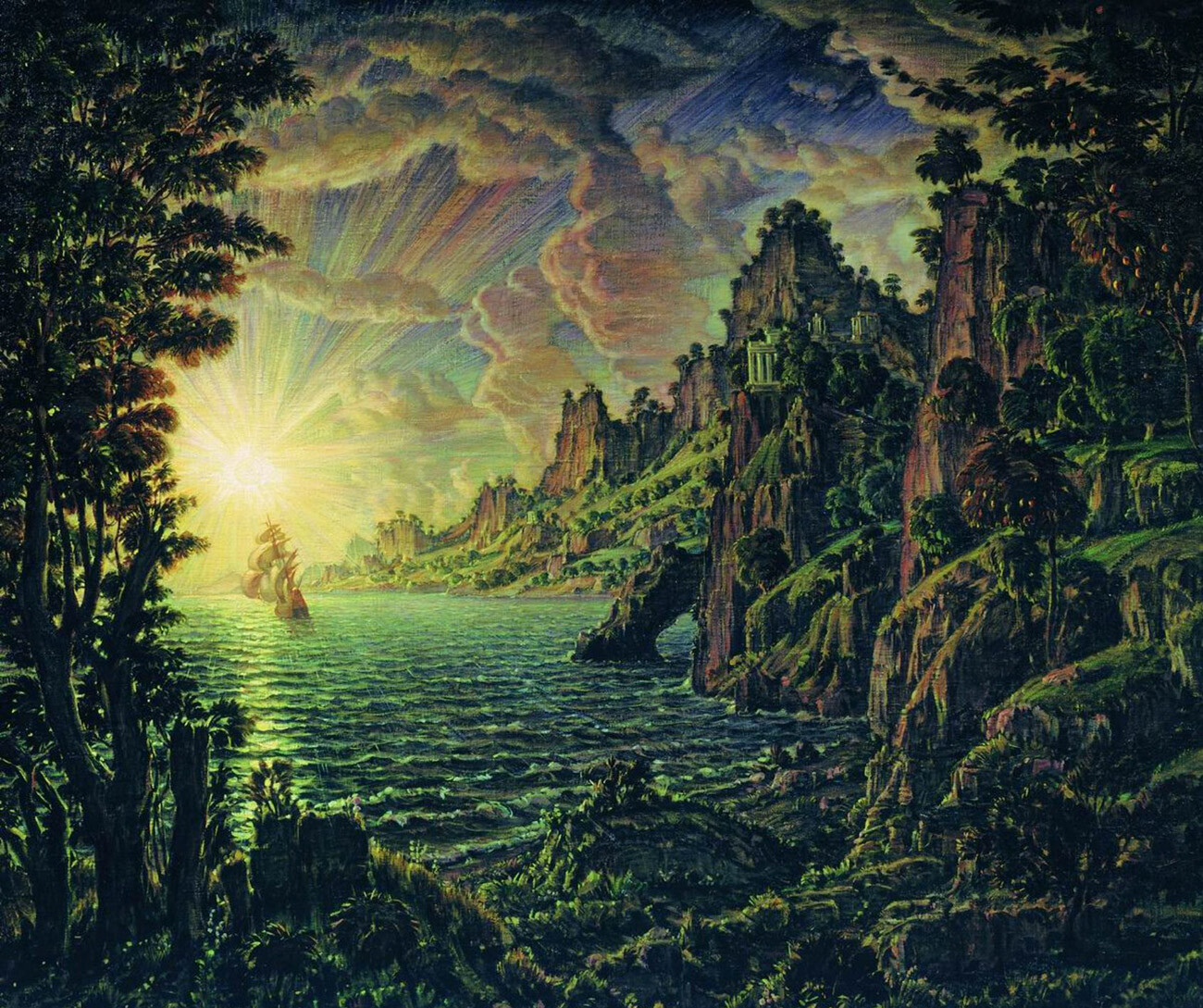
In 1909-1910, Bogaevsky traveled to Europe again, where he came under the spell of the art of Claude Lorrain, whose influence was reflected in his own works. Bogaevsky reworked some of the French painter’s themes and then the outlines of “another” world began to show through the classical landscapes - as if these were not familiar Crimean views, but dreams of them.

Among the admirers of his work was industrialist and patron of the arts Mikhail Ryabushinsky, who purchased four of Bogaevsky’s paintings and several watercolors. And, in 1912, he ordered a decorative panel from him for the large drawing room of his house on Malaya Nikitskaya Street in Moscow. Bogaevsky painted a triptych - ‘Distance’, ‘Pinnacle’ and ‘Sun’. Who but he could have made them harmonize with the works of the famous Mikhail Vrubel displayed nearby?
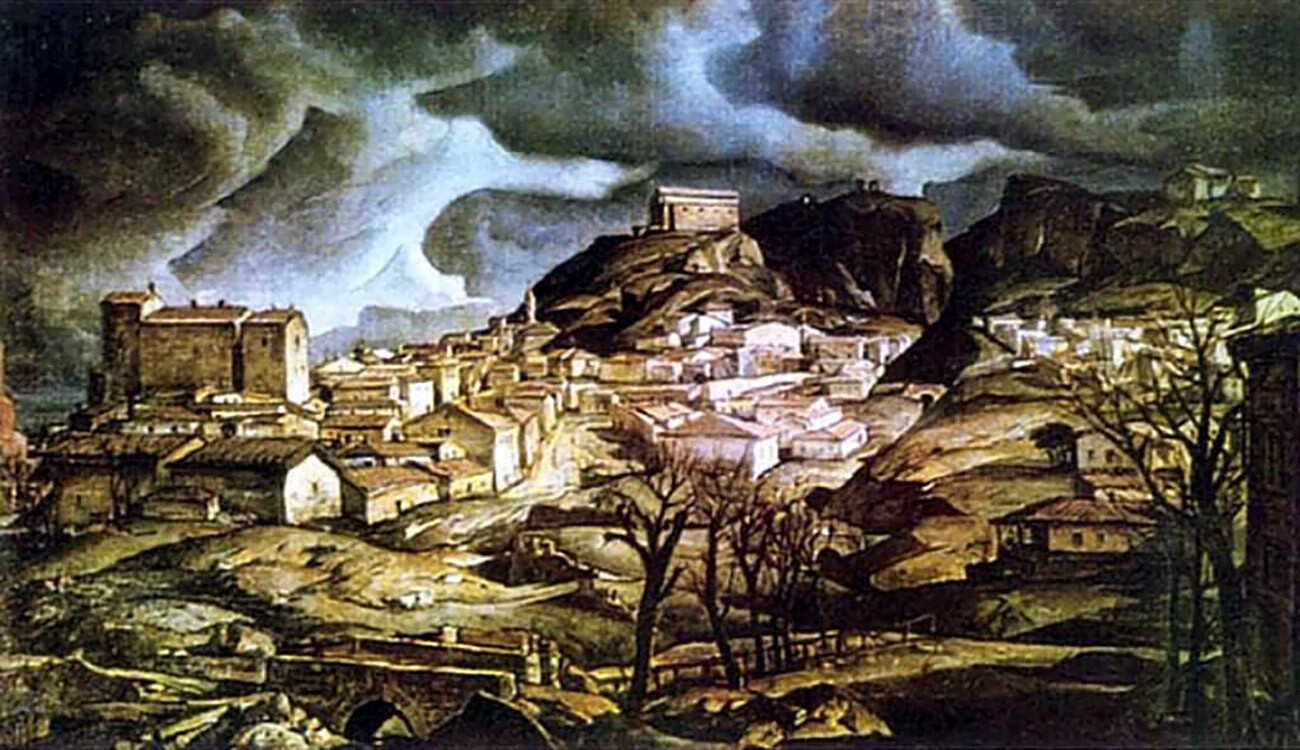
After the Revolution, the artist worked in the Crimean organization for the protection of historical monuments and heritage sites. He was in his element: He sketched the historical monuments of Yalta, Alupka and Bakhchisarai. The result was albums of prints with views of the peninsula. This work seemed to reconcile the past and the present in his art.
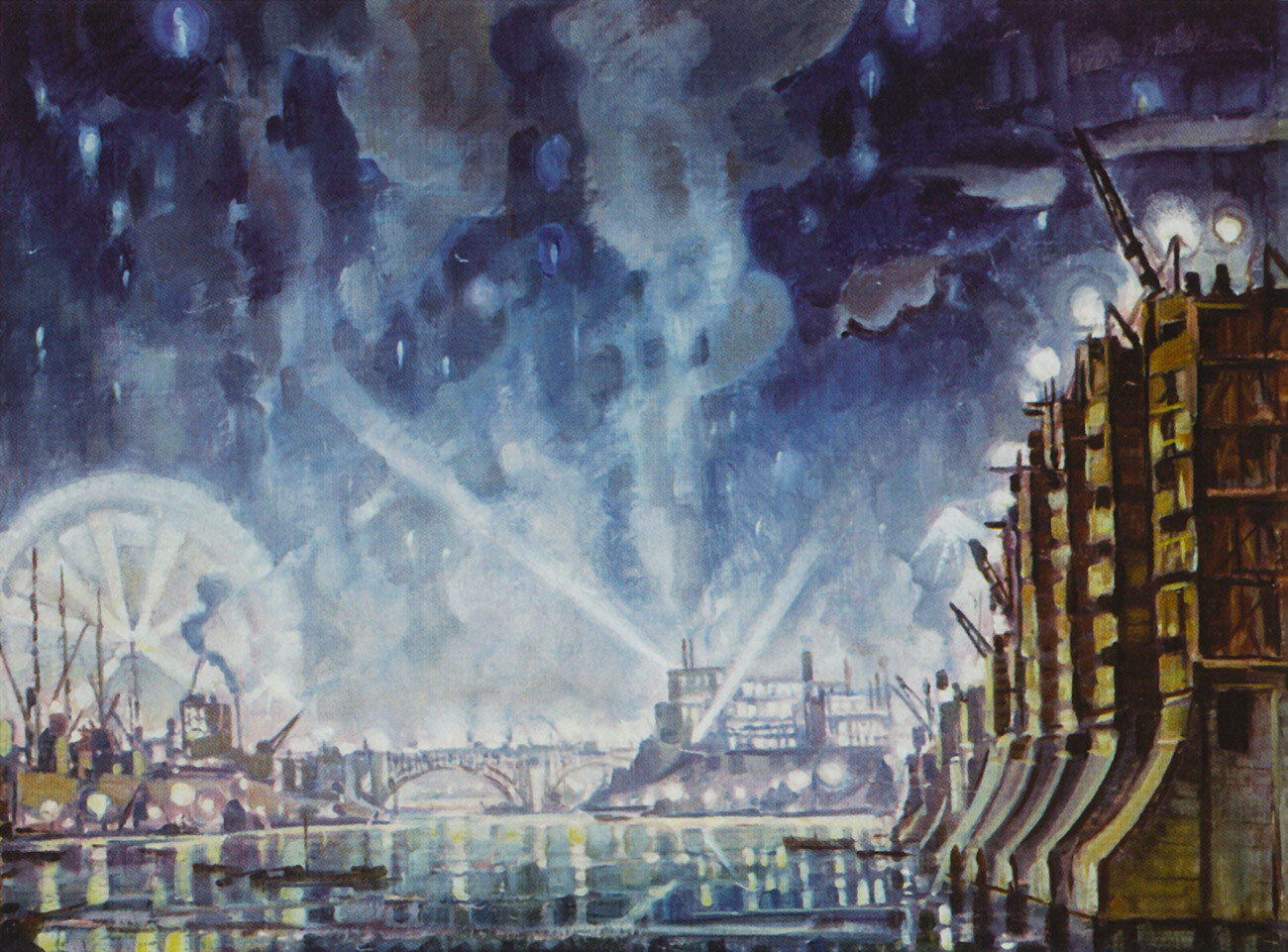
In the 1930s, he switched to industrial landscapes and visited the Soviet Union’s major construction sites. Enormous buildings, oil derricks and dams and power stations in the middle of being built - the artist did not so much record the gigantic building projects, as paint cities of the future, in which everything is put at the service of man. He was not entirely pleased with the result, however, and said that he had painted “the cities of ancient Mexico”.
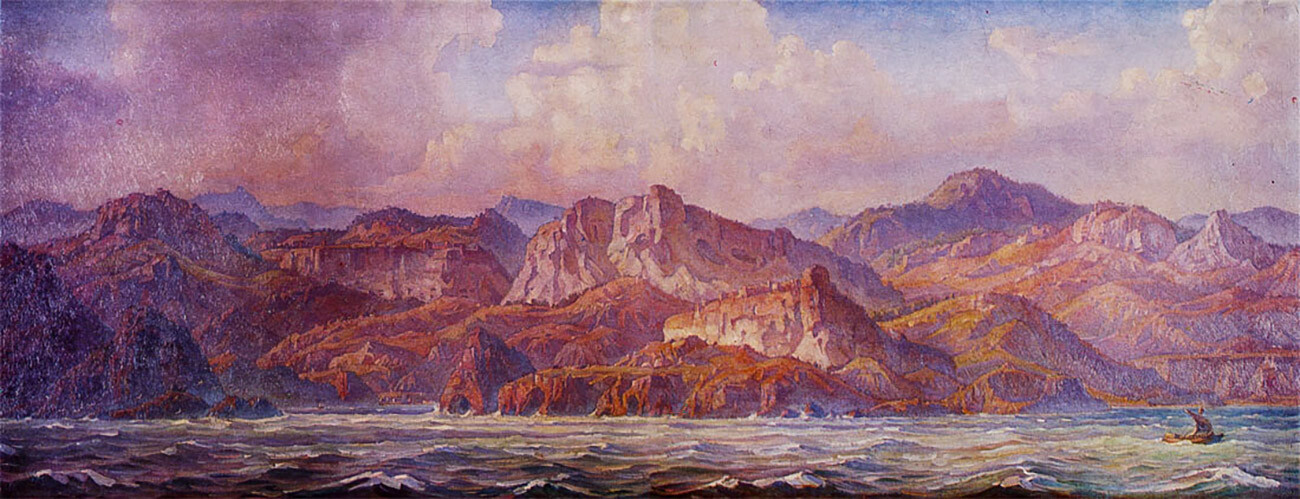
The artist wrote that views of Crimea awakened his imagination. Even while working on "prosaic" things such as panels for an agricultural exhibition in Moscow, he time and again returned to landscapes with mountain ranges and picturesque bays. After ancient Cimmeria, Tauroscythia also started appearing in his canvases.
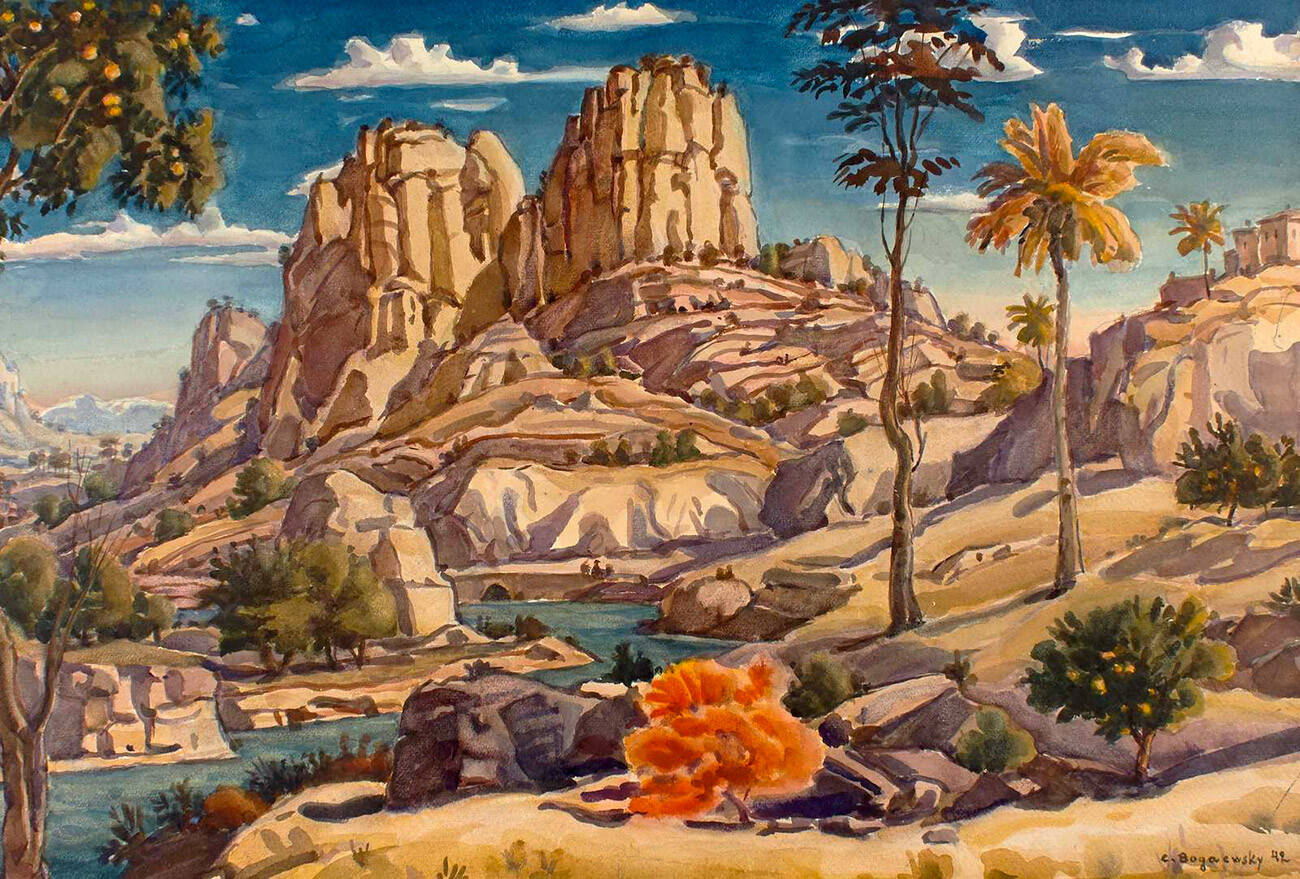
One of Bogaevsky’s favorite old masters was Andrea Mantegna. The artist repeatedly referenced his work. As early as 1910, he had executed a landscape sketch which he initially titled ‘After Mantegna’. He turned to Mantegna again in the years of World War II. Inspired by the master’s ‘Agony in the Garden’, Bogaevsky painted ‘Memories of Mantegna’.
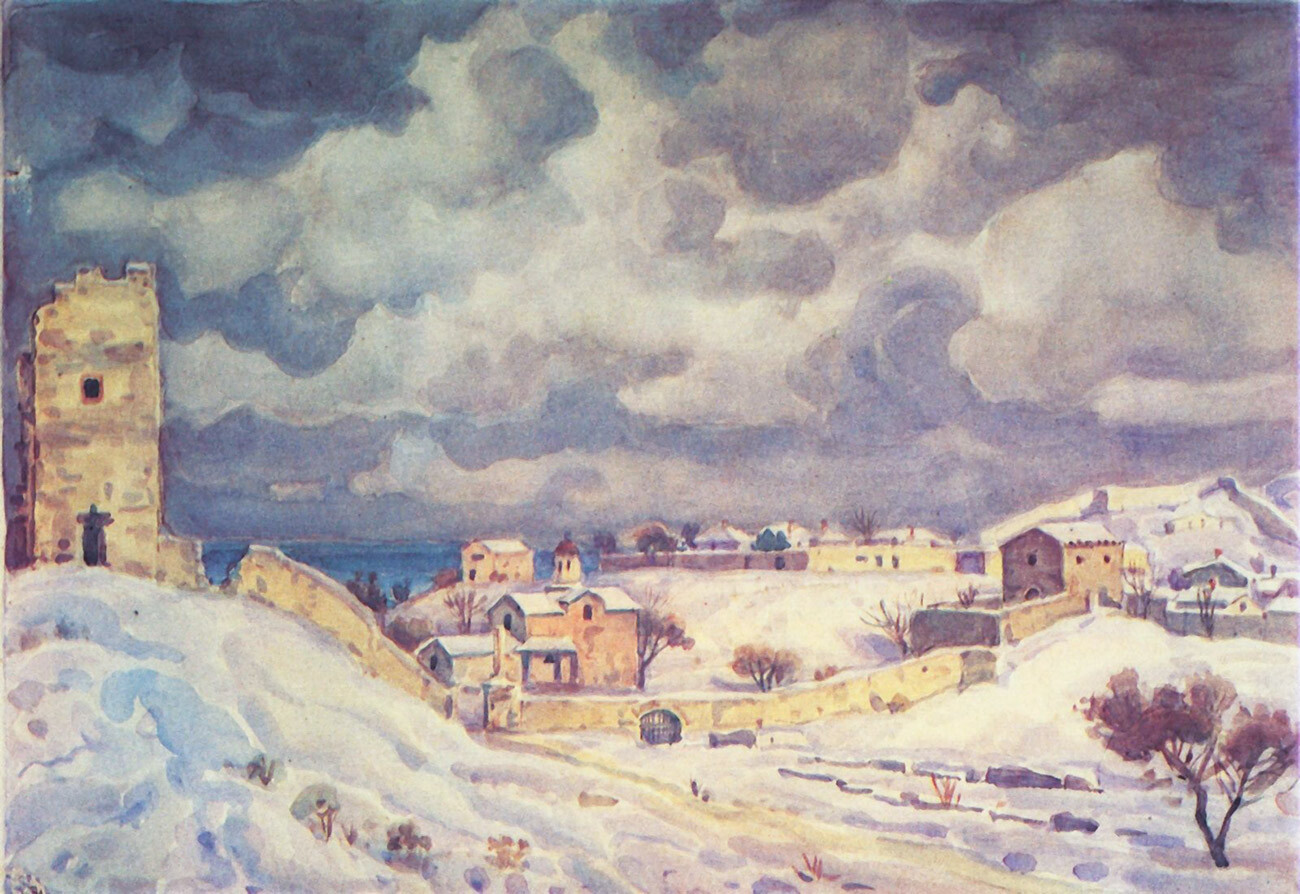
During the war, the artist did not leave with other evacuees. Life was hard: His house and studio were looted more than once, but, by a miracle, Bogaevsky managed to protect the city picture gallery from the Germans. But, he did not manage to save himself: In an air raid, he failed to get down on the ground and remained standing. Shrapnel from a bomb literally decapitated him. Not long before his death, he painted an untypical winter landscape of Feodosia with low billowing clouds and masonry almost bereft of color.
*The exhibition to mark the 150th anniversary of the birth of Konstantin Bogaevsky will be displayed at the Russian Museum in St. Petersburg from February 10 to May 22, 2023.
If using any of Russia Beyond's content, partly or in full, always provide an active hyperlink to the original material.
Subscribe
to our newsletter!
Get the week's best stories straight to your inbox